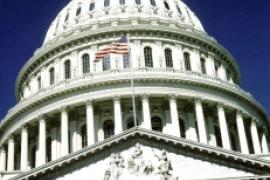On April 20, the Wage and Hour Division of the U.S. Department of Labor (DOL) issued final rules revising the definitions of who is exempt from the minimum wage and overtime provisions of the Fair Labor Standards Act as a "white collar" employee for the first time in more than fifty years.
In doing so, the DOL made some significant changes to the proposed revisions that it issued in March 2003 to answer critics who said the proposal would have removed overtime pay requirements from as many as eight million nonexempt workers. The DOL said it received more than 75,000 comments on the proposed rules, about 600 of which contained substantive analysis.
The new rules will take effect 120 days after their publication in the Federal Register, which is scheduled to happen by April 30, according to Labor Secretary Elaine L. Chao, resulting in an effective date sometime in late August.
The DOL estimates that the new rules will strengthen overtime protections for more than 6.7 million lower-paid salaried workers, including 1.3 million who are exempt under the current rules, while only 107,000 workers earning more than $100,000 a year could lose their current overtime protection. The current rule is "as protective as the current regulations" for the 57 million workers earning salaries in between these two extremes, according to the DOL.
Under the final rules, any employee earning less than $455 a week ($23,660 a year) will be a nonexempt employee entitled to overtime pay, whether the employee is paid on an hourly or salary basis. This amount is an increase from the current regulations, under which employees earning less than $155 a week ($8,060 a year) are automatically entitled to overtime pay.
The final rules also establish a new exemption for highly compensated employees who receive total compensation of at least $100,000 a year and perform at least some of the exempt work of an executive, administrative, or professional employee. The proposal had set the total compensation amount at $65,000.
Other significant changes from the proposal include:
Reinstating the current requirement that exempt administrative employees exercise "discretion and independent judgment" as part of their primary duty;
Removing the proposed executive exemption for employees who are in "sole charge" of a physically separate branch of an employer;
Clarifying the learned professional exemption by removing references in the proposal to alternate training that could qualify an employee for the exemption, including training in the armed forces or attending a technical school or community college;
Making it clear that the white collar exemptions don't apply to manual laborers or other "blue collar" workers no matter how highly paid they might be;
Stating that the exemptions also don't apply to "first responders" such as police officers, firefighters, or emergency medical technicians, even though they may have some supervisory responsibility (e.g., police sergeants); and
Clarifying that registered nurses will generally qualify for the learned professional exemption, while licensed practical nurses will not.
Prior to their publication in the Federal Register, the DOL has created a "FairPay" Web site providing information on the revised final rules: www.dol.gov/esa/regs/compliance/whd/fairpay/main.htm.
Originally published in the 2004 Spring issue of The CampLine.

